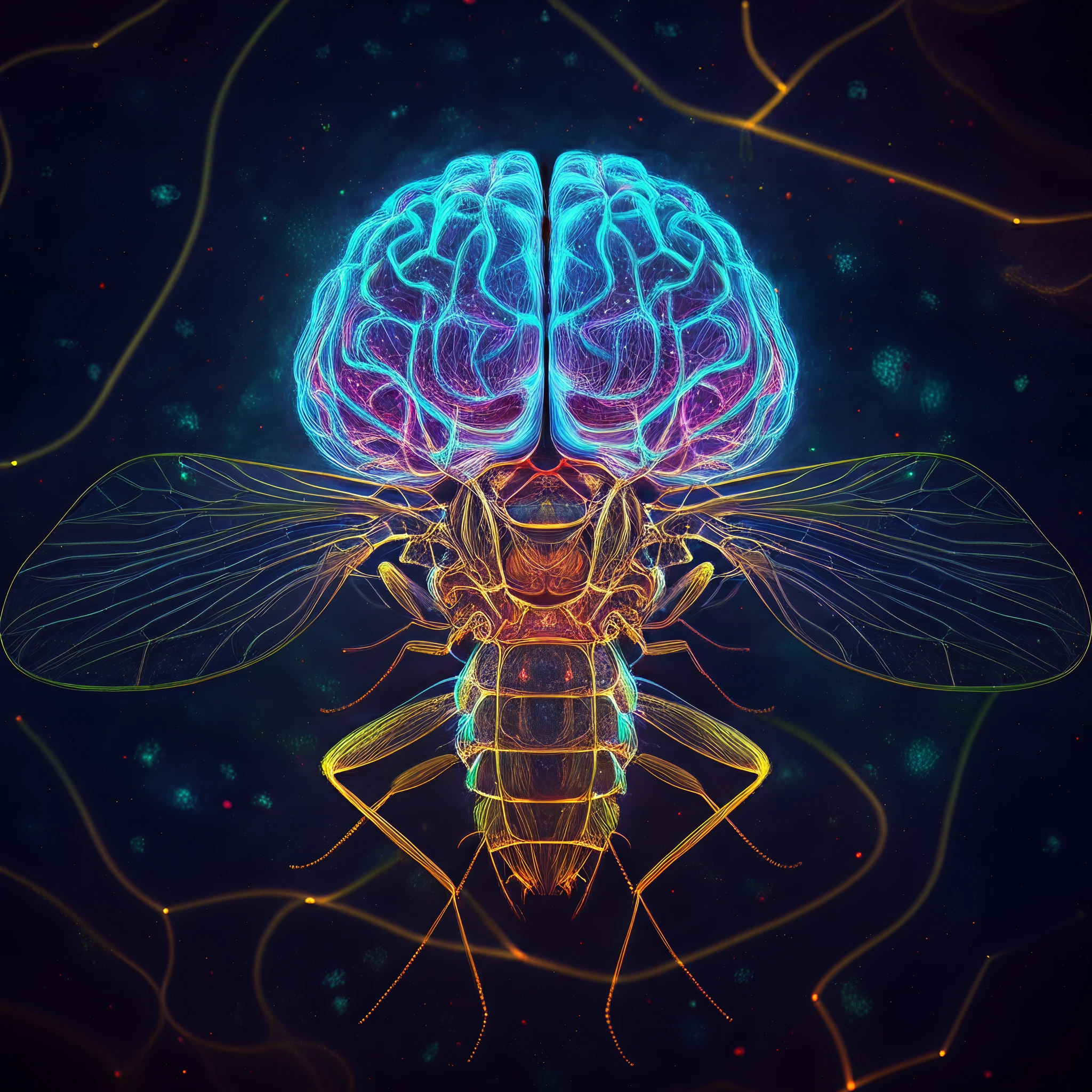Neuroscience has entered a new era with the ambitious goal of understanding how entire brains work. Among the various breakthroughs in the field, the Drosophila Connectome Project stands out as one of the most exciting endeavors. By mapping every synapse in the brain of the Drosophila melanogaster (commonly known as the fruit fly), scientists aim to unlock profound insights into how neural circuits support behavior and learning. This article offers an overview of the project, its innovative techniques, key findings, and why it matters to science and beyond.
What Is the Drosophila Connectome Project?
The Drosophila Connectome Project is a bold initiative to create a complete synapse-by-synapse map of the fruit fly brain. A “connectome” refers to a comprehensive map of all the neurons in a brain and their connections, known as synapses. The fruit fly larva was chosen because its brain consists of only about 3,016 neurons and 548,000 synapses, making it simpler (but still highly sophisticated) compared to the human brain’s staggering 86 billion neurons.
The project, led by scientists at institutions like Cambridge University, represents a significant leap forward in connectomics. Whereas past studies often focused on smaller neural networks, the Drosophila connectome is the most complex brain to be fully mapped to date.
Techniques Used for Mapping
Creating the Drosophila connectome required integrating cutting-edge technologies and meticulous research. The key technique involved was electron microscopy (EM).
- Ultra-Thin Brain Slicing
The fruit fly’s brain was sliced into thousands of ultra-thin layers, each mere nanometers thick. These slices were imaged using electron microscopy, capturing intricate details of the neuronal structures.
- 3D Reconstruction
The two-dimensional slices were meticulously aligned to recreate the brain’s three-dimensional structure. Specialized algorithms were used to trace neural pathways and map the connections across synapses.
- Signal Propagation Algorithms
Scientists used advanced computational models to simulate how signals travel through the neural circuits. This enabled the team to analyze key aspects like feedforward and feedback pathways, multisensory integration, and cross-hemisphere interactions.
Key Findings from the Drosophila Connectome
The Drosophila connectome has already yielded groundbreaking insights:
- Nested Loops
The study revealed a complex hierarchy of nested loops within the fly’s brain. These loops facilitate sophisticated behaviors such as learning, decision-making, and sensory integration.
- Cross-Hemisphere Communication
The mapping uncovered how different hemispheres of the brain coordinate and share information, offering parallels to what is observed in larger, more complex brains.
- Multisensory Integration
Scientists identified pathways that merge sensory input from different modalities (such as smell, taste, and sight), allowing the fly to make adaptive decisions based on environmental cues.
Comparison to Other Connectomes
The Drosophila connectome represents a significant leap in scale compared to other fully mapped brains:
- C. elegans (Roundworm)
The first organism to have its connectome mapped, C. elegans has only 302 neurons and ~7,000 synapses. While pioneering, its insights are limited by the simplicity of its neural circuits.
- Zebrafish Larvae
With tens of thousands of neurons in their brains, zebrafish larvae have provided more complex models for understanding nervous systems, though their connectomes remain only partially mapped.
Compared to these models, the fruit fly connectome bridges the gap between simple organisms and more complex vertebrates, making it an excellent model for studying general principles of neuroscience.
Implications for Neuroscience Research
The Drosophila connectome is more than just a milestone for understanding fruit fly brains; it has broad implications for neuroscience and other fields:
- Understanding Neural Circuit Function
The ability to trace every neural path offers invaluable insights into how brain circuits give rise to perception, memory, and behavior.
- Advancing Artificial Intelligence
The nested loops and multisensory processing mechanisms observed in the Drosophila brain could inspire new architectures for machine learning and AI systems.
- Neurological Disease Research
By studying how neural connections are organized and how disruptions occur, researchers could gain new perspectives on diseases such as Alzheimer’s and Parkinson’s.
- Ethical Pathways to Brain Simulation
The combination of the Drosophila connectome with mechanical models of the fly’s behavior brings us closer to creating fully simulated organisms. These simulations could provide ethical ways to study brains without relying on live specimens.
The Road Ahead for Connectomics
Although the Drosophila connectome project marks a historic achievement, there is still much to learn. Scientists are already working toward mapping adult fruit fly brains, which are larger and more complex than their larval counterparts. Additionally, combining the connectome map with functional studies (such as observing neural activity in response to stimuli) will deepen our understanding even further.
It’s also worth noting the broader trend in connectomic research. Similar projects aim to map the brain of the mouse, which has millions of neurons. These endeavors will undoubtedly take years, but tools such as advanced machine learning and high-resolution imaging are accelerating the process.
Final Thoughts
The Drosophila connectome provides a groundbreaking step toward unraveling the mysteries of the brain. By understanding how a “simple” organism’s brain achieves complex behaviors, we gain insights into both the fundamental workings of neural networks and the broader design strategies of nature.
Whether it’s for decoding human cognition or building smarter AI, the lessons offered by this map are invaluable. If you’re as fascinated by these discoveries as we are, keep an eye on connectomics research—it’s a field that’s truly just getting started.
Feel free to share your thoughts or questions in the comments below! What do you think will be the next major milestone in neuroscience?








